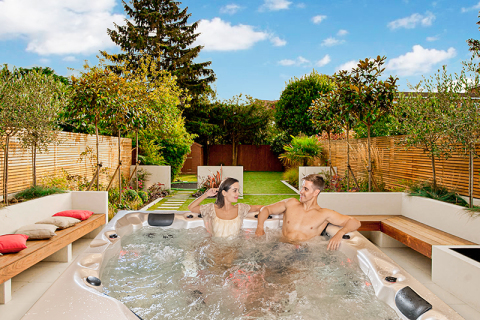
- Home
- >
- News
- >
- Industry news
- >
News
The chemical addition sequence should strictly adhere to these principles: 1. Adjust alkalinity first 2. Adjust pH second 3. Adjust hardness 4. Remove metals 5. Add stabilizer 6. Add disinfectant 7. Perform maintenance by shock treatment
The fundamental reason why chlorine and hydrochloric acid cannot be mixed: a violent chemical reaction. Although chlorine and hydrochloric acid both play important roles in swim and spa pool water treatment, they should never be mixed directly, especially in their undiluted, concentrated form, which is extremely dangerous.
The disinfecting efficiency of chlorine is closely related to the pH of the water. When the pH of a swim spa tub is low (<7.0), chlorine is more likely to form HOCl, but it also reacts more readily with other ions in the water. In an acidic environment, metal oxidation is more intense, resulting in more pronounced yellowing.
Not all sites are suitable for the standard thickness. In some cases, the foundation should be thickened as needed. 1. Soft or non-bearing soil · Sand, clay, or landfill; · Underlying pipelines, old structures, or voids. It is recommended to increase the thickness to 5–6 inches (12–15 cm) and use a double layer of steel mesh (8–12 mm diameter on each layer).
· It is recommended that users add approximately 60-85 grams of dichlorodichlorobenzene granules (based on a 1,300 liter water volume) before daily use; · If using trichlorodichlorobenzene or liquid chlorine, recalculate based on the available chlorine content; · Maintain a free chlorine concentration of 3-5 ppm is ideal; · Test and refill as needed after each use.
Minor cracks (surface only, less than 2cm in length and 0.5mm in width) generally do not immediately impact structural safety. However, if the cracks extend further and penetrate the fiberglass layer, structural strength may be compromised, especially if the bathtub is frequently moved or subjected to excessive weight.
Many users experience skin irritation, itching, redness, and swelling when water quality is unbalanced (especially when the pH is too acidic or when there is excess residual chlorine). Baking soda, as a weakly alkaline substance, has excellent anti-irritant properties. Its mild neutralizing properties can alleviate skin problems caused by disinfectant residue or acidic imbalances in water.
Improper installation is one of the primary factors that lead to repeated cracking in acrylic spa tubs: · The bottom of the tub is not fully in contact with the ground, resulting in uneven stress concentration in the suspended area; · Failure to use appropriate foam fillers or support frames; · Failure to account for minor unevenness in the wall or floor tiles during installation, leading to abnormal pressure points in the tub.
For common black scuff marks, you can choose a commercially available acrylic cleaner or a neutral, non-abrasive all-purpose cleaner: Steps: · Clean the stained area with a damp, soft cloth; · Spray the cleaner onto the black mark; · Gently rub with a microfiber cloth or sponge in a circular motion; · Rinse with warm water and wipe dry.
Acrylic spa bathtubs: A thick layer of acrylic (usually 2-5mm thick) is visible, with a fiberglass reinforcement layer underneath. Fiberglass bathtubs: The overall surface is thinner, with no visible acrylic panels. The interior is often a one-piece glass fiber composite material.
Thoroughly clean the acrylic spa bathtub with warm water and a neutral detergent: · Clean the surface thoroughly with a soft cloth, especially around the nozzles and crevices; · If scale is present, soak the area with a 1:1 mixture of white vinegar and water before wiping; · Avoid using harsh, corrosive cleaners containing chlorine, ammonia, or ethanol.
Maintaining cleanliness is fundamental to maintaining an acrylic spa tub and the first step to preventing material aging and system failure. 1. Frequency of Use and Cleaning Recommendations Daily Use: Clean after each use 2-3 times a week: Clean twice a week Occasional Use: Clean after each use












